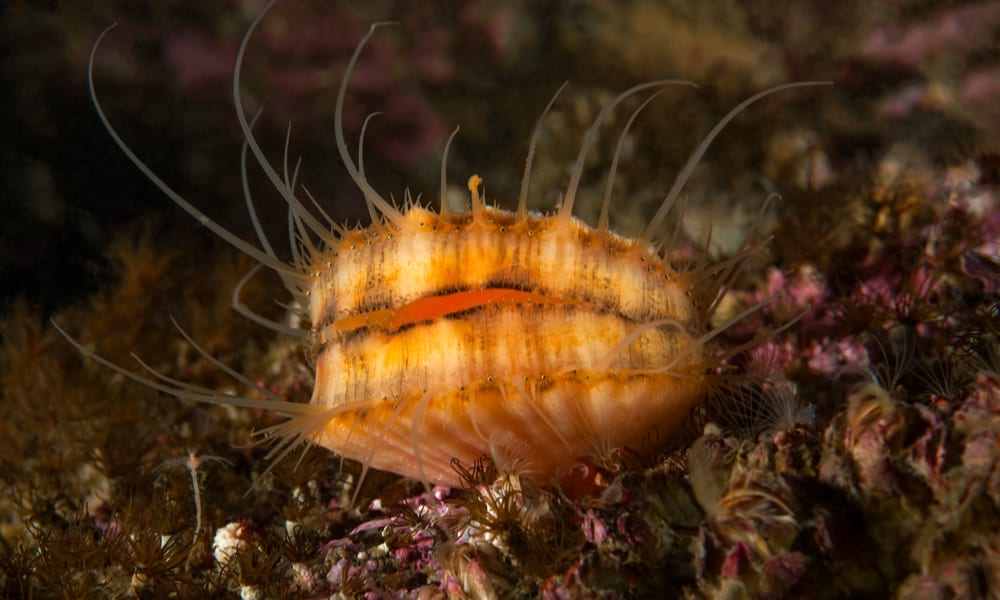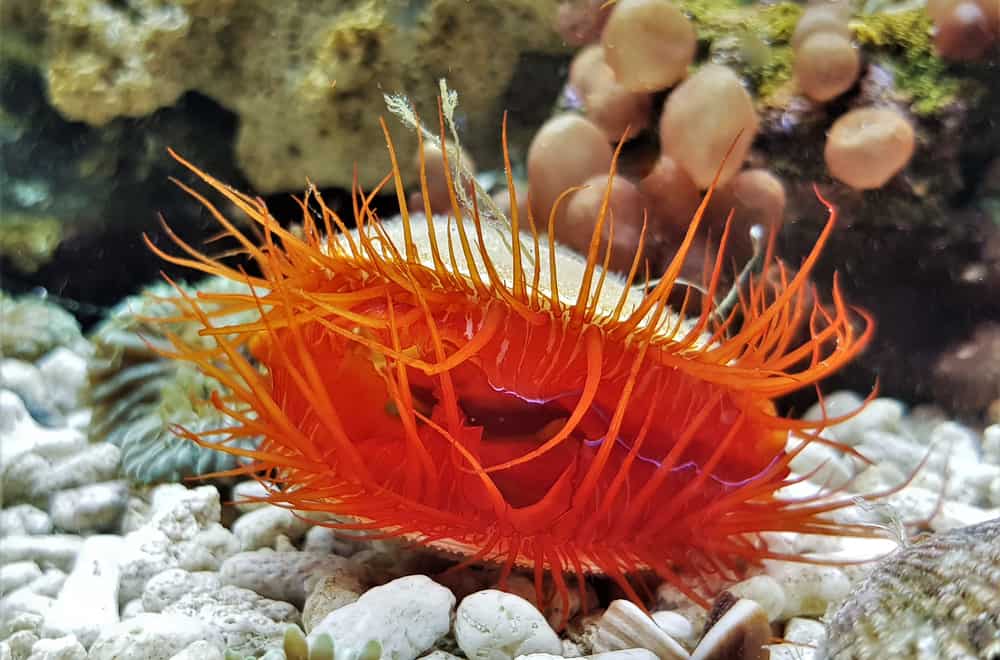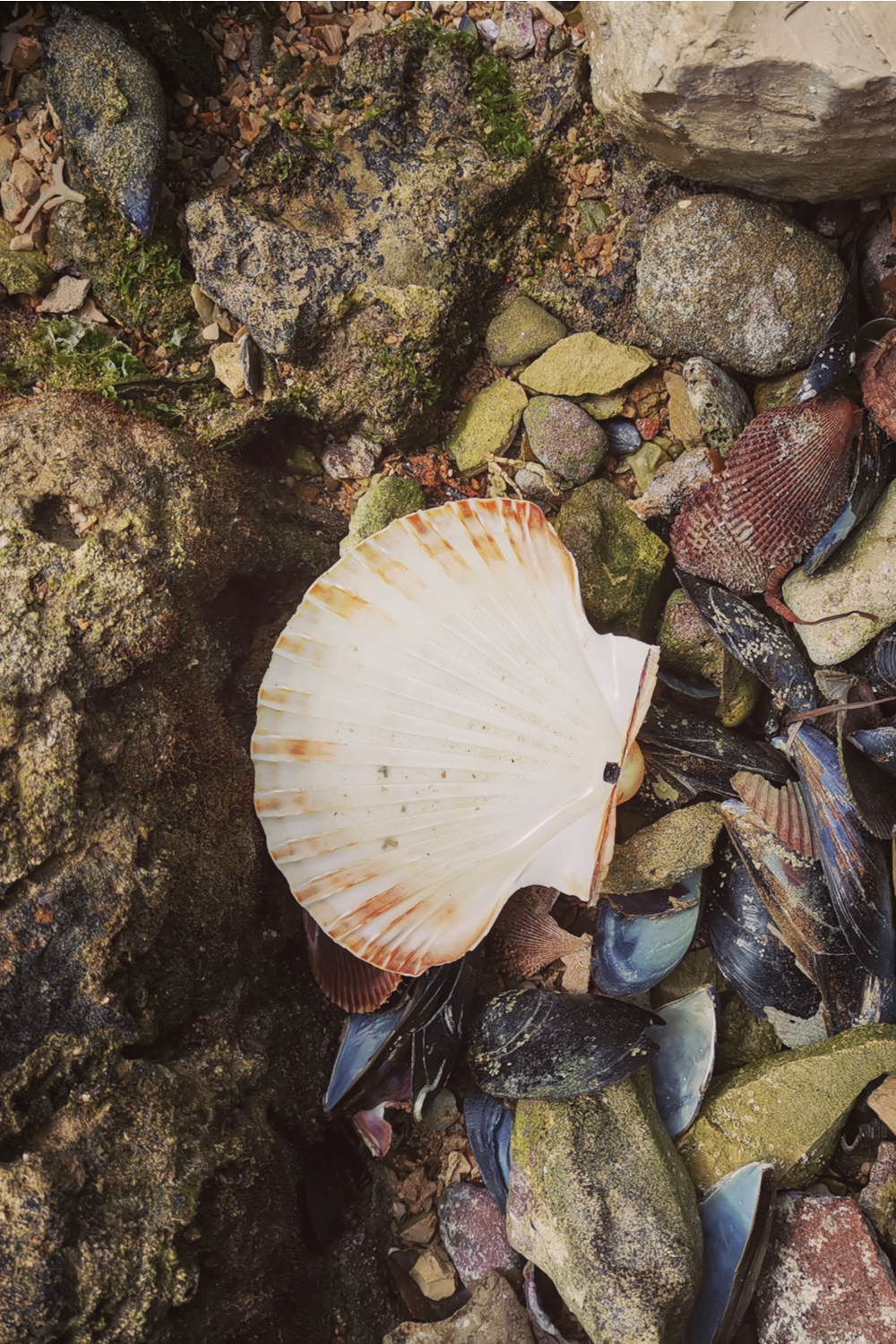Scallops have an irresistible taste and soft texture, and truly make an exceptional delicacy at the dinner table. That’s all most people know. But there is a lot to learn about scallops including where they live, their habits, and importantly, what they eat. So, let’s take you through that today. Ready?
Scallop Habits and Biology
Scallops are a type of mollusks found in saltwater environments. They are bivalve mollusks, meaning, their interior muscle is enclosed with two shells just like clams, mussels, and oysters.
There are many types of scallops, living either in the sea or in bays. Sea scallops usually have a large shell and more meat and will mostly be found further from the land. Bay scallops, on the other hand, have a smaller shell and less meat and mostly live in shallow water close to the land.
Scallops are Pectinidaes, a family that houses over 400 species of scallops. Members of this group have an adductor muscle that opens and closes their shells so they can move through the water. They will quickly clap their shells through the water and swim at a surprisingly high speed.
They have many eyes and depending on species, scallops can have anywhere between 50 and 200 small, bead-like eyes. The color of the eyes varies too but the majority have brilliant blue color that helps them detect light, dark, and movement.
You can tell male scallops from females by looking at their reproductive parts. Male organs are white while females’ are red. Most scallops are hermaphrodites, meaning, they carry both male and female reproductive organs. But there are some that are only either male or female.
Regardless, scallops reproduce by spawning. Their eggs and sperm are released into the water where fertilization takes place. Once they are hatched, the baby scallops stay afloat on the surface of the ocean before sinking and attaching to objects at the bottom. Scallops use byssal threads for attachment, but as they grow, they shed the byssus and swim freely.
Watch this video to have a glimpse of how a scallop moves through the water:
What Do Scallops Eat in the Wild?
Scallops feed by filtering small organisms from the water they live in. They don’t have siphons like most bivalves do. Instead, they have a filtering structure through which water moves, and small organisms are trapped in mucus and become their food.
The food is moved toward the mouth using structures called cilia after which it is transported to the digestive system.
To better understand how a scallop feeds, watch this video:
What Do Scallops Like to Eat?
Scallops’ main diet is phytoplankton. They will filter the water for organisms such as:
- Algae
- Krill
- Bacteria
- Flagellate
- Other scallops’ larvae
- Small mollusks, crustaceans, and coelenterates
How Scallops’ Diet Benefits the Ecosystem
Because scallops feed by filtering the surrounding phytoplankton and other microorganisms out of the water, they actually help enhance the quality of water. Removing these suspended materials makes the water safe for other marine animals not just to drink but also to dwell in.
Clean oceans are an important part of the ecosystem, especially when more than 40% of the world’s population resides within 60 miles of the coast. By having these cute little creatures clean the water bodies for us, they ensure a healthier source of food for humans.
Scallops are estimated to consume up to 30% of marine microorganisms, which means they do a pretty good job at cleaning out oceans. Without scallops, many aquatic animals would not be able to survive.
Facts About Scallops
1. Scallops Cannot Survive in Freshwater
Unlike oysters, muscles, and other members of the Pectinidae family, scallops are not able to completely close their shells, which means they can only survive in areas with deep salty water.
Their inability to tolerate freshwater bodies means that they cannot be found in areas with intertidal waters except in the spring when the tides are exceptionally low.
2. Scallops Don’t Have Brains
Just like all bivalve mollusks, scallops lack an actual brain. Instead, they have three paired ganglia (the pedal ganglia, the cerebral ganglia, and the visceral ganglia) located at different parts of their body that control their nervous system.
3. Scallops Produce Pearls
Scallops will produce pearls once in a while. However, unlike those of feather oysters, scallop pearls lack both sheen and iridescence. They are small and dull, but they do occur in varying colors, which makes them great for aesthetics.
4. Scallops Create Mutual Relationships With Other Marine Organisms
Some scallops have been found to frequently carry sponges, barnacles, and other epibionts on their shells, helping them safely and swiftly cruise from one point to the other.
But the relationship is two-way, as the epibionts also offer protection by making it impossible for predators like the sea star to adhere to scallop shells. They also provide some form of camouflage, which hides the scallop from predators and create a physical barrier at basal openings that keep the sea star from inserting its digestive membranes into the scallop.
5. Scallops Love Seagrasses
All scallop habitats have one thing in common – seagrass. This vegetation is essential to scallops not just because it harbors microorganisms that they feed on but also because it protects their fertilized eggs.
In mild currents, seagrasses help keep both the eggs and the baby scallops safe, which ensures species survival.
6. Scallops Have an Unusual Arrangement of Sex Organs
The scallop is one of the few sea creatures with a complex arrangement of reproductive organs. In some species, they will be either male or female. In other species, they will have both sex organs and in a few other species, they will be male when young and change to female when they start growing older.
7. Scallops Are Frequently Caught By Humans for Food
If you are a seafood person, then there is a good chance that you have had a serving of scallops a few times. They are mouthwatering sweet and tender, capable of turning any dinnertime into a delicacy. Here is a video on how to make your own scallops at home:
Unfortunately, the high demand for scallops has made these creatures be hunted extensively. Many fisheries with scallops have collapsed over the years and the remaining ones are still threatened.
Some popular scallop catching methods such as bottom trawling have put immense stress on scallop fisheries. Anglers drag huge trawl nets across the seafloor catching everything that stands on the way.
Catching scallops this way takes away the creatures in large numbers, which reduces the breeding population. It also damages their habitat.
8. Scallops Produce Many Eggs
Female scallops can lay millions of eggs every year. However, like most marine creatures, scallops don’t care for their eggs. They leave them floating on the ocean where the males release the sperm to fertilize them.
Because of how light they are, scallop eggs are carried by the water currents and spread to different parts of the sea. Many are damaged in the process and a good number is eaten by predators. But thanks to the high number of eggs laid, many survive to term and hatch to tiny scallop larvae.
9. Scallop Shells Are a Symbol of Fertility
Scallop and other bivalve shells have been used throughout antiquity to symbolize the feminine principle. Most paintings of Venus, the well-known goddess of fertility, have a scallop shell to identify her.
10. Scallops Have a Long Lifespan
Scallops can live for up to 20 years. Unfortunately, not many get to live their full life because most of them are killed both by predators and humans. You can know how old a scallop is by counting the number of rings on its shell.
11. Scallops Can Grow Up to 9 Inches in Size
While most scallops will max out at about 4 inches, some species can grow up to 9 inches. However, their size will depend on the habitat. Bay species are smaller and the majority do not exceed 4 inches in size.
12. Humans Love to Eat the Adductor Muscle
What most people call scallop is actually the adductor muscle, the part that opens and closes the shells. The adductor muscle is usually white or beige, but the color can vary from species to species. The only other edible part is the coral. This one is greyish or pinky-orange and much softer.
13. Scallops Move Fast
Scallops open and close their shells rapidly to travel through water. Because of the force they create by doing this, they are able to swim at a speed of up to 14 inches per second. This is how they are able to escape predators.
Summary
Scallops mainly feed on phytoplankton, mostly algae, krill, and larvae. They filter these microorganisms from the sea, which helps purify the water, making it safe for other marine animals to live in. But scallops make delicious seafood too, which puts them at risk of overfishing; they are by far some of the most hunted sea creatures.


